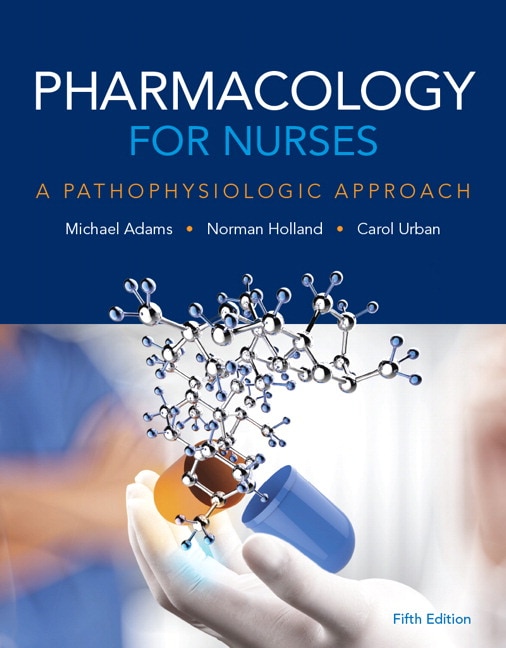Table of Contents
PART ONE INTRODUCTION TO READING AND WRITING
1 An Overview of the Reading Process (with Writing)
What Is Active Reading?
What is the Reading Process?
Pre-Reading Strategies
Preview Before Reading
Examining a Professional Essay “Secrets for
Surviving College and Improving Your Grades,”
Saundra K. Ciccarelli and J. Nolan White
Make predictions
Connect Reading to Prior Knowledge and Experience
Form Guide Questions
During Reading Strategies
Highlight and Annotate
Map
Outline
Figure Out Unfamiliar Words
Analyze Visuals
Textbook Learning Aids and How to Use Them
Use the SQ3R System for Learning from Textbooks
Post-Reading Strategies
Paraphrase
Summarize
Use Learning and Recall Strategies
Think Critically
READ AND RESPOND
A Professional Essay “Secrets for Surviving
College and Improving Your Grades,” Saundra K. Ciccarelli and J. Nolan White
SELF-TEST SUMMARY
2 An Overview of the Writing Process (with Reading)
What Is Good Writing?
Connect the Reading and Writing Processes
Examining a Professional Article “The Flight from
Conversation,” Sherry Turkle
The Five Steps in the Writing Process
Examining Student Writing Jake Frey
Generate Ideas
Organize Your Ideas
Consider Your Audience and Purpose
Write a First Draft
Think Critically About Incorporating Visuals into Your Writing
Revise and Rewrite Drafts
Edit and Proofread Your Final Draft
READ AND RESPOND
A Student Essay The Romance of Technology, Jake Frey
READ AND RESPOND
A Professional Essay “The Flight from Conversation,” Sherry Turkle
SELF-TEST SUMMARY
Vocabulary Workshops
WORKSHOP 1 Expanding Your Vocabulary
WORKSHOP 2 Using Context Clues
WORKSHOP 3 Using Word Parts
PART TWO READING, WRITING, AND ORGANIZING PARAGRAPHS
3 Topics, Main Ideas, and Topic Sentences
What Is a Paragraph?
Examining Student Writing “The Russian and U. S. School Systems,” Kate Atkinson
Identifying and Selecting Topics
Reading: Locating the Topic of a Paragraph
Writing: Selecting a Topic
Reading and Writing Topic Sentences
Reading: Locating Topic Sentences
Reading: Placement of Topic Sentences
Writing: Refining Your Topic
Writing: Developing Effective Topic Sentences
Writing: Broad Versus Narrow Topic Sentences
Think Critically About Topic Sentences
READ AND RESPOND
A Student Essay “The Russian and U. S. School Systems,” Kate Atkinson
READ AND RESPOND
A Professional Essay “Greed, Cancer, and Pink KFC Buckets,” John Robbins
SELF-TEST SUMMARY
4 Details, Transitions, and Implied Main Ideas
What Are Details, Transitions, and Implied Main Ideas?
Examining Student Writing “From Bullet to Blue Sky,” Yesenia DeJesus
Reading: Identify Supporting Details
Types of Supporting Details
Think Critically About Details
Writing: Select and Organize Details to Support Your Topic Sentence
Selecting Relevant Details
Including Sufficient Details
Types of Supporting Details
Organize Details Effectively
Use Specific Words
Use Transitions to Guide Your Reading and Writing
Reading: Identify Implied Main Ideas
READ AND RESPOND
A Student Essay “From Bullet to Blue Sky,” Yesenia DeJesus
READ AND RESPOND
A Professional Essay ”Hidden Hunger,” Katie Robbins
SELF-TEST SUMMARY
5 Organization: Basic Patterns
What Are Patterns of Organization?
READING AND WRITING TIME SEQUENCE: CHRONOLOGICAL ORDER, PROCESS, AND NARRATION
What Is Time Sequence?
Reading Chronological Order and Process
Thinking Critically About Time Sequence
Writing Process Paragraphs
Reading Narration
Writing Narration Paragraphs
READING AND WRITING DESCRIPTION
What Is Description?
Reading Description
Thinking Critically About Description
Writing Descriptive Paragraphs
READING AND WRITING EXAMPLE
What Is an Example?
Reading Example
Thinking Critically About Example
Writing Example Paragraphs
READ AND RESPOND
A Student Essay ”The End of the Road: A Guide to break Ups,” Leila Kaji
READ AND RESPOND
A Professional Essay ”Cairo Tunnel,” Amanda Fields
SELF-TEST SUMMARY
6 Organization: Additional Patterns
What Are Additional Patterns of Organization?
READING AND WRITING DEFINITION
What Is Definition?
Reading Definition
Thinking Critically About Definition
Writing Definition Paragraphs
READING AND WRITING CLASSIFICATION
What Is Classification?
Reading Classification
Thinking Critically About Classification
Writing Classification Paragraphs
READING AND WRITING COMPARISON AND CONTRAST
What Are Comparison and Contrast?
Reading Comparison and Contrast
Thinking Critically About Comparison and Contrast
Writing Comparison and Contrast Paragraphs
READING AND WRITING CAUSE AND EFFECT
What Are Cause and Effect?
Reading Cause and Effect
Thinking Critically About Cause and Effect
Writing Cause and Effect Paragraphs
READ AND RESPOND
A Student Essay ”Benefits of Joining the Military,” Jessica Nantka
READ AND RESPOND
A Professional Essay ”E-Waste and E-Waste Recycling,” Jay Withgott and Scott Brennan
SELF-TEST SUMMARY
7 Strategies for Revising Paragraphs
What Is Revision?
Read Critically to Revise
Examining Student Writing Elizabeth Lawson
Writing: Consider Your Purpose and Audience
Reading and Writing: Examine Your Ideas
Relevant and Sufficient Detail
Logical Organization of Ideas
Revise for Specific and Vivid Language
Edit for Correctness
Keeping an Error Log
READ AND RESPOND
A Student Essay ”My Unexpected Addiction,” Elizabeth Lawson
First Draft
First Revision---Showing Changes in Ideas
Second Revision---Showing Editing and Proofreading
READ AND RESPOND
A Professional Reading ”Students Vulnerable to Computer Gaming Addiction”
SELF-TEST SUMMARY
PART THREE READING AND WRITING ESSAYS
8 Reading, Planning, and Organizing Essays
Why Read and Write Essays?
Read Essays to Build Comprehension and Recall
Examining a Professional Reading “To Catch A Liar,” Sandra Parshall
Think Critically About Essays
Write Essays to Express Ideas
Examining Student Writing “Relationships 2.0: Dating and Relating in the Internet Age,” Ted Sawchuck
Choose a Topic
Generate Ideas About Your Topic
Consider Audience, Purpose, and Tone
Write a Thesis Statement
Plan and Organize Your Essay
READ AND RESPOND
A Student Essay Student Freewriting, Ted Sawchuck
A Professional Essay “Mind Your Own Browser,” Simon L. Garfinkel
SELF-TEST SUMMARY
9 Drafting and Revising Essays
What Is a Draft?
Read While Drafting
Drafting your Essay
Drafting Body Paragraphs
Examining Student Writing Ted Sawchuck
Supporting Your Thesis with Substantial Evidence
Ted’s First Draft
Using Transitions to Make Connections
Write the Introduction, Conclusion, and Title
Writing the Introduction
Writing the Conclusion
Selecting a Title
Think Critically About and Revise Your Draft
Examining Your Ideas
Examining Content and Structure
Revising Thesis Statements
Revising Paragraphs
Revising Sentences and Words
Edit and Proofread
READ AND RESPOND
A Student Essay ”Relationships 2.0: Dating and Relating in the Internet Age,” Ted Sawchuck
READ AND RESPOND
A Professional Essay You’re Under Surveillance, Julia Angwin
SELF-TEST SUMMARY
10 Reading and Writing Essays with Multiple Patterns
What Is a Multi-Pattern Essay?
Recognize Multiple Patterns When Reading
Identifying the Primary Pattern in a Multi-Pattern Essay
Identifying Secondary Patterns in a Multi-Pattern Essay
Examining a Professional Reading Picking Partners, Rebecca Donatelle
Examining Student Writing Gang Life: Better from the Outside, DeJohn Harris
Write a Multiple Pattern Essay
What to Consider When Choosing a Primary Pattern of
Organization
Choosing Secondary Patterns of Organization
Drafting a Multiple-Pattern Essay
READ AND RESPOND
A Student Essay ”Gang Life: Better from the Outside,” Dejohn Harris
READ AND RESPOND
A Professional Essay ”What is the High Art of Competitive Eating?” Gabriel Muller
SELF-TEST SUMMARY
11 Writing Essays Using Sources
What Is an Essay That Uses Sources?
Examining Student Writing “Weighing the Consequences of Censorship in the Media,” Adam Simmons
Reading: Find and Record Appropriate Sources
Tips for Finding Appropriate Sources
Recording Sources to Avoid Plagiarism
Writing: Use Sources to Support Your Thesis and Develop Your Essay
Critical Thinking: Synthesize Sources
How to Compare Sources to Synthesize
How to Develop Ideas About Sources
Document Sources Using MLA or APA Styles
Documentation
An Overview of MLA Style
An Overview of APA Style
READ AND RESPOND
A Student Essay in MLA Format “Weighing the Consequences of Censorship in Media,” Adam Simmons
SELF-TEST SUMMARY
PART FOUR CRITICAL THINKING, READING, AND WRITING
12 Critical Thinking: Making and Inferences Analyzing the Author’s Message
How Does Critical Thinking Apply to Reading and Writing?
Examining a Professional Article “A Brother Lost,” Ashley Womble
Make Inferences
Reading: How to Make Inferences
Writing: Thinking Critically About Inferences
Reading: Assess the Source and Author Qualifications
Reading: Considering the Source
Reading: Considering the Author’s Credentials
Reading: Evaluating Internet Sources
Writing: Thinking Critically About Source and Authority
Distinguish Between Fact and Opinion
Writing: Thinking Critically About Fact and Opinion
Evaluate Evidence and Omissions
Reading: What Evidence Has the Author Provided?
Reading: What Information Has the Author Omitted?
Writing: Thinking Critically about Evidence
Analyze Tone
Writing: Thinking Critically about Tone
READ AND RESPOND
A Student Essay The Role of Sports in Life, Chase Beauclair
READ AND RESPOND
A Professional Essay “A Brother Lost,” Ashley Womble
SELF-TEST SUMMARY
13 Critical Thinking: Evaluating the Author’s Techniques
Why Evaluate the Author’s Techniques?
Examining a Professional Article “Sweatshops at Sea,” Virginia Sole-Smith
Understand Connotative and Figurative Language
Reading Connotative Language
Writing: Use Connotative Language Carefully
Reading Figurative Language
Writing: Use Figurative Language Effectively
Reading: Analyze Assumptions
Writing: Make Reasonable Assumptions
Reading: Evaluate Generalizations
Writing: Make Generalizations Based on Sufficient Evidence
Reading: Identify Bias
Writing: Handle Bias Openly
READ AND RESPOND
A Student Essay ”TV’s Bloody Obsession,” Aurora Gilbert
READ AND RESPOND
A Professional Essay ”Sweatshops at Sea,” Virginia Sole-Smith
SELF-TEST SUMMARY
14 Critical Thinking: Reading and Writing Arguments
What Is an Argument?
The Parts of an Argument
Examining a Professional Article “Who Are the Animals in Animal Experiments?” Aysha Akhtar, MD, MPH
Read an Argument Effectively
Recognizing Types of Supporting Evidence
Think Critically About Arguments
Evaluating Evidence
Examining Opposing Points of View
Considering Emotional Appeals
Identifying Errors in Reasoning
Examining Student Writing “Marijuana: An Argument
for Legalization,” Quinne Sember
Write Argument Essays
Analyzing Your Audience
Writing a Thesis Statement
Researching Your Topic
Providing Adequate Supporting Evidence
READ AND RESPOND
A Student Essay Marijuana: An Argument for Legalization, Quinne Sember
READ AND RESPOND
Paired Professional Essays “Who Are the Animals in Animal Experiments?” Aysha Akhtar, MD, MPH
SELF-TEST SUMMARY
PART FIVE THEMATIC READER: WRITING IN RESPONSE TO READING
Theme 1: Crime in the 21st Century: Technology and Trafficking
Reading 1: (Textbook) Technology and Crime
Reading 2: (Article) Global Human Trafficking: A Modern Form of Slavery
Reading 3: (Article) Human Traffic: Exposing the Brutal Organ Trade p.
Writing About the Readings
Synthesis Questions
Theme 2: Journalism: A Changing Field in a Digital Age
Reading 1: (Textbook) An Inside Look at Today’s News Media
Reading 2: (Article) The Media Need to Stop Inspiring Copycat Murders. Here’s How.
Reading 3: (Article) Photojournalism in the Age of New Media.
Writing About the Readings
Synthesis Questions
Theme 3: Sports and Society
Reading 1: (Textbook) Drug Abuse Among Athletes
Reading 2: (Article) The National Brain-Damage League
Reading 3a: (Opinion Piece: PRO) Should College Football Student Athletes Get Paid?
Reading 3b: (Opinion Piece: CON) College Athletes Already Have Advantages and Shouldn’t Be Paid
Synthesis Questions
Writing About the Readings
PART SIX REVIEWING THE BASICS
A. UNDERSTANDING THE PARTS OF SPEECH
B. UNDERSTANDING THE PARTS OF SENTENCES
C. AVOIDING SENTENCE ERRORS
D. WRITING EFFECTIVE SENTENCES
E. USING PUNCTUATION CORRECTLY
F. MANAGING MECHANICS AND SPELLING
Credits
Index





